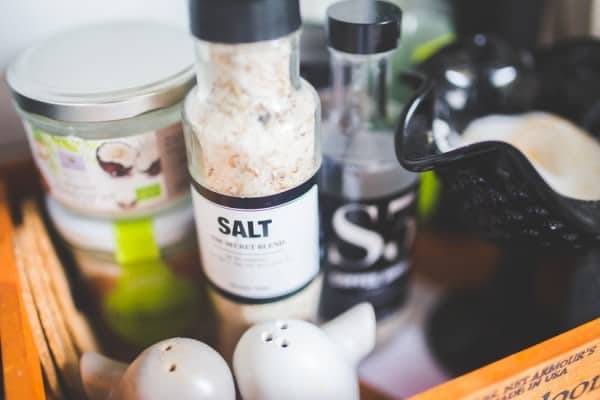Healthy eating is new black and I love the fact that more people are taking an interest in their health and wellbeing. Growing alongside our increased interest in nutrition has been a corresponding influx of information presented to us on the internet, and through advertising around what’s healthy and what’s not so healthy. One of these is pink Himalayan salt. I’ve read so many exaggerations around it’s ‘health benefits’. Whilst it’s fine to use a little salt in the context of a healthy diet that is abundant in minimally processed foods (most of our salt intake comes from food rather than our addition of salt to food), there is no evidence that pink Himalayan salt has any special health benefits. Here’s a look into what it is and it’s claims vs reality.
Pink Himalayan Salt
Touted as being superior to sea salt, pink Himalyan salt is often thought of as being healthier due to the presence of minerals. It is claimed to contain over 84 essential minerals, so of course it does sound like it would be healthier right? While it may contain minerals, the amounts are so tiny that they have little relevance to the health of your diet, and are much better supplied in other food sources. Also due to the relationship of excess sodium on blood pressure, lots of added salt isn’t the ideal way to increase your mineral intake. If you choose to use pink Himalayan salt because of the minerals, just remember it’s only a really small small trace amount you are getting.
Himalayan salt is taken from different salt mines. Interestingly, rather than coming from ‘deep in the unpolluted Himalyans’, from what I’ve read, many brands are from a rock salt mine in Pakistan at the foothills of the Himalayas. It is the naturally occurring minerals found in salt water which gives the salt it’s pink colour, taste and texture.
I found an analysis of one sample of pink himalayan salt on a website here. Assuming it is accurate, pink Himalayan salt does contain a number of minerals in small amounts, and i’m not surprised here. But what did surprise me is that it isn’t necessarily as ‘pure’ the consumer may believe. This sample analysed contained substances you might not think of as being present in your salt. These are present in really small trace amounts, and would not be harmful in such trace amounts. Just in the same way the teeny amounts of minerals are not likely to be of much benefit. I’m sure that many salts would have small trace amounts of such substances.
A couple of things that were present in the analysis included:
* Small amounts of lead and arsenic
* Small amounts thallium, a compound which is toxic. But in the sample there are only very very small amounts present (the dose is always what makes something toxic)
You can see the analysis here.
There’s an interesting article here (near the bottom for the info on Himalayan salt) that presented a sample which also showed similar traces of heavy metals and also some small amounts of radioactive substances.
What got me interested in looking at this issue was when I heard via twitter about some heavy metal contamination in a sample of pink salt. Scientist Professor Cres Eastmen presented research at the International Science of Nutrition in Medicine and Healthcare Conference in Australia showing high levels of a heavy metal contamination in pink salt from a mine in the Himalayas. Most of the salt in Australia is from a different region than the sample tested, but still, high levels of heavy metals are not what you want in any salt samples.
After the finding above, a group of researchers in Australia are currently crowd funding to do some thorough testing of salt sold around Australia to find out exactly what is in pink salts in terms of nutrients and contaminants. Brands between Australia and NZ tend to be similar, so hopefully we’ll have a better idea soon of what exactly is in pink Himalayan salt.
All this aside, salt is still salt. Iodised salt is useful as it provides a mineral that, depending on your diet, many New Zealand diets lack. So even though salt should be used sparingly, when you do choose to use salt, it is a good option to use, unless you pay special attention to getting your iodine from other sources such as seaweed.
If you like pink Himalayan salt and are happy to pay the difference, then by all means use it. But just remember, it’s still salt and those minerals are in such small amounts they aren’t really going to make a difference to your health.


Great post! I had been wondering what was supposed to be so great about this.